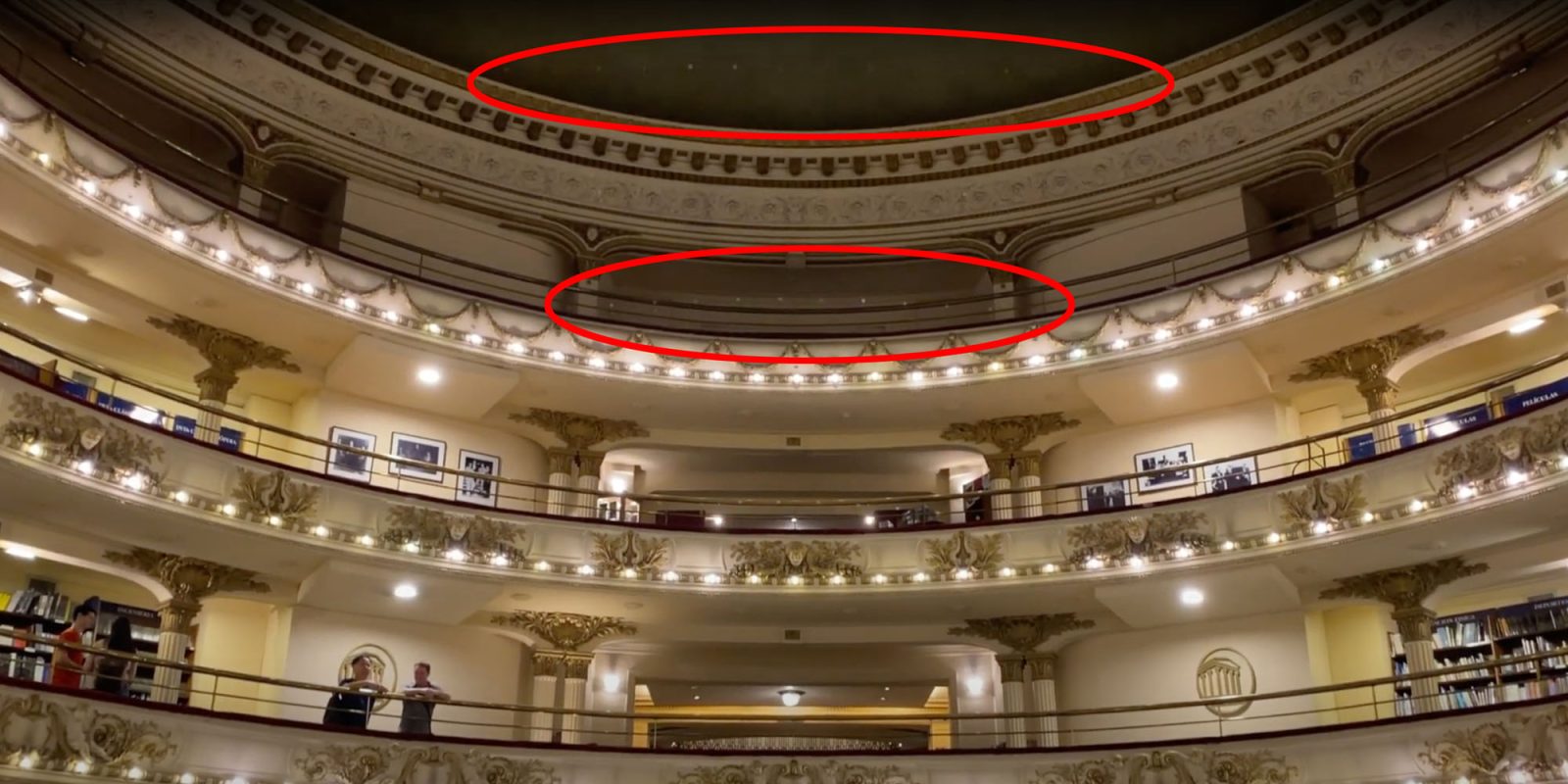
The iPhone 16 Pro camera could see a small-sounding improvement which could turn out to fix what I see as one of the biggest problems with current and recent models: internal reflections.
While iPhone cameras have gotten better with each generation, and are now good enough that many of us use them as our primary camera, there is one issue which can significantly degrade images when shooting into the light …
Lens flare and internal reflections
This is a problem I first saw in the iPhone 11 Pro.
One weakness I did notice is that there are quite a lot of internal reflections when there are lights in the shot. For example, when panning up in the book store, the rainbow-shaped crescent of lights are reflections of the balcony ones bouncing around inside the lens array. I see a lot of similar reflections in other clips.
This is most noticeable in videos, as the reflections move within the image as the camera or subject moves. The above example is a frame-grab from a video, and you can see just how distracting it is as the camera pans upwards (clip should automatically begin at 5:52):
This is a problem which has continued through each successive generation, including my iPhone 15 Pro Max. While it might seem relatively trivial, and doesn’t much matter in a holiday video like this, it’s honestly the biggest reason to give me pause over shooting more serious video with my iPhone.
iPhone 16 Pro camera could solve this
A report by leaker Yeux1122 says that Apple is currently testing a new lens coating technology, said to be planned for the iPhone 16 Pro models.
Apple is said to be testing a camera lens with new coating technology for application on the next iPhone Pro model.
Additional introduction of new ALD atomic layer deposition (ALD) equipment. Through this, we will be able to see improvements in the quality of photography, such as a reduction in flares.
While the report only mentions lens flare, both this and internal reflections have the exact same cause – reflection and scattering of light on the surfaces of the multiple lens elements – and ALD is designed to minimize this.
Existing anti-reflective coatings try to fix this problem, but the relative thickness of these compared to ALD means that the coating can be uneven, and thus limited in effectiveness. As the name suggests, atomic layer deposition is a method of applying a coating at the atomic layer.
We’ve mentioned before Yeux1122’s mixed track record, but are likely more reliable with this type of detailed supply-chain report than some of their more speculative posts.
FTC: We use income earning auto affiliate links. More.



